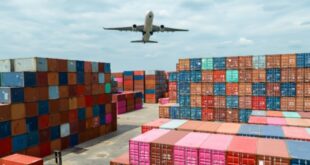The trend toward more online shopping means more logistics jobs and that could work to the Inland Empire’s advantage as retailers get ready for the holidays.
Two thousand and nineteen is looks like it will be a good year for holiday hiring in the Inland Empire.
The economy remains strong, unemployment is low and most retailers have been adding jobs this year. Like Christmas shopping, Christmas hiring usually matches up with the previous nine months, said Terri Relf, senior marketing manager at Inland Center Mall in San Bernardino and the Mall of Victor Valley in Victorville.
“The retailers I’ve talked to say they expect to hire people this year,” Relf said. “Every store is different, but I think there’s a feeling there will be a lot of hiring because people will be buying, once we get to November.”
Another good sign for anyone looking for a temporary job this Christmas: Target Corp., the eighth-largest retail chain in the United States, is going to maintain its tradition of hiring lots of workers to help deal with the holiday shopping rush.
The Minneapolis-based company, which has more than 1,800 stores nationwide, announced Sept. 10 that it plans to hire more than 130,000 seasonal workers this year, for its brick-and-mortar locations and supply chain, according to a statement released Sept. 10.
Approximately 125,000 of those hires will work in stores at jobs that will pay at least $13 an hour to start. Many of those hires will work in same-day services, like order pickup and drive-up, both of which Target expects to double in workforce size.
About 8,000 seasonal employees will be assigned to the company’s 39 distribution and fulfillment centers nationwide, filling jobs that will get goods to stores and fulfill online orders, according to the statement.
More good news: UPS, Amazon and Kohl’s combined are looking to hire 230,000 seasonal workers this year, and they’re offering better pay and more incentives than they have in the past to reach that goal.
UPS expects to hire about 100,000 temporary workers this year to deliver packages.
Those jobs will start in late November – around Black Friday, the day after Thanksgiving – and last into early January. Most of those will include package handlers, drivers and driver’s assistant, according to a statement.
UPS paid an average of $10.10 an hour to its holiday workers last year. This year, because of a new labor contract, pay will start at $14 per hour, and it could go as high as $30 per hour for truck drivers, according to reports.
Amazon, the e-commerce giant with 16 logistics centers in the Inland Empire, has said it plans to hire “tens of thousands” of seasonal workers this year, but it did not give an exact number. Those workers will be paid at least $15 an hour, Amazon’s minimum wage, according to a statement.
Amazon, which has a fulfillment center in Eastvale that covers one million square feet, hired approximately 100,000 seasonal workers last year.
Kohl’s, which has a history of hiring extra workers at Christmas – it hired about 90,000 last year – began its seasonal hiring this summer. It plans to fill about 2,500 store jobs and a handful of warehouse positions for the Christmas rush, according to a statement.
It’s probably a good sign when two major retailers and a major package delivery company believe they will need extra help at Christmas. But one of the oldest outplacement firms in the United States, one that has been predicting holiday hiring trend for years, isn’t so optimistic.
Chicago-based Challenger, Gray & Christmas Inc. begins its 2019 forecast by returning to last year. Despite a record number of hiring announcements early on, U.S. retailers added only 625,600 jobs during the fourth quarter, the smallest amount for that quarter since 2009, according to the U.S. Bureau of Labor Statistics.
That was also a 6.4 percent in jobs added from the fourth quarter of 2017, when 668,400 jobs were added.
“The shift to online shopping in retail means traditional retailers will likely not hire the numbers they once did,” said Andrews Challenger, vice president of Challenger, Gray & Christmas, in a statement.
Challenger did note that more holiday jobs are happening in transportation and warehousing, as online shopping has forced more retailers to rely on fulfillment centers. Still, the firm is predicting, based on the current state of the economy and consumer spending trends, “seasonal hiring [that] will stagnate or fall slightly from last year.”
Because the Inland Empire has so many warehouse-distribution jobs, it may be helped by the addition of more seasonal logistics jobs, said Jay Prag, professor of economics at Claremont Graduate University’s Drucker School of Management.
“I think all of the signs point to a lot of [local] seasonal hiring this year,” Prag said. “People are spending money and consumer confidence is high. The tariff situation, especially with China, will always be problematic for the Inland Empire, but most of the seasonal jobs will be filled well before Christmas, so it won’t matter.”
 IE Business Daily Business news for the Inland Empire.
IE Business Daily Business news for the Inland Empire.

